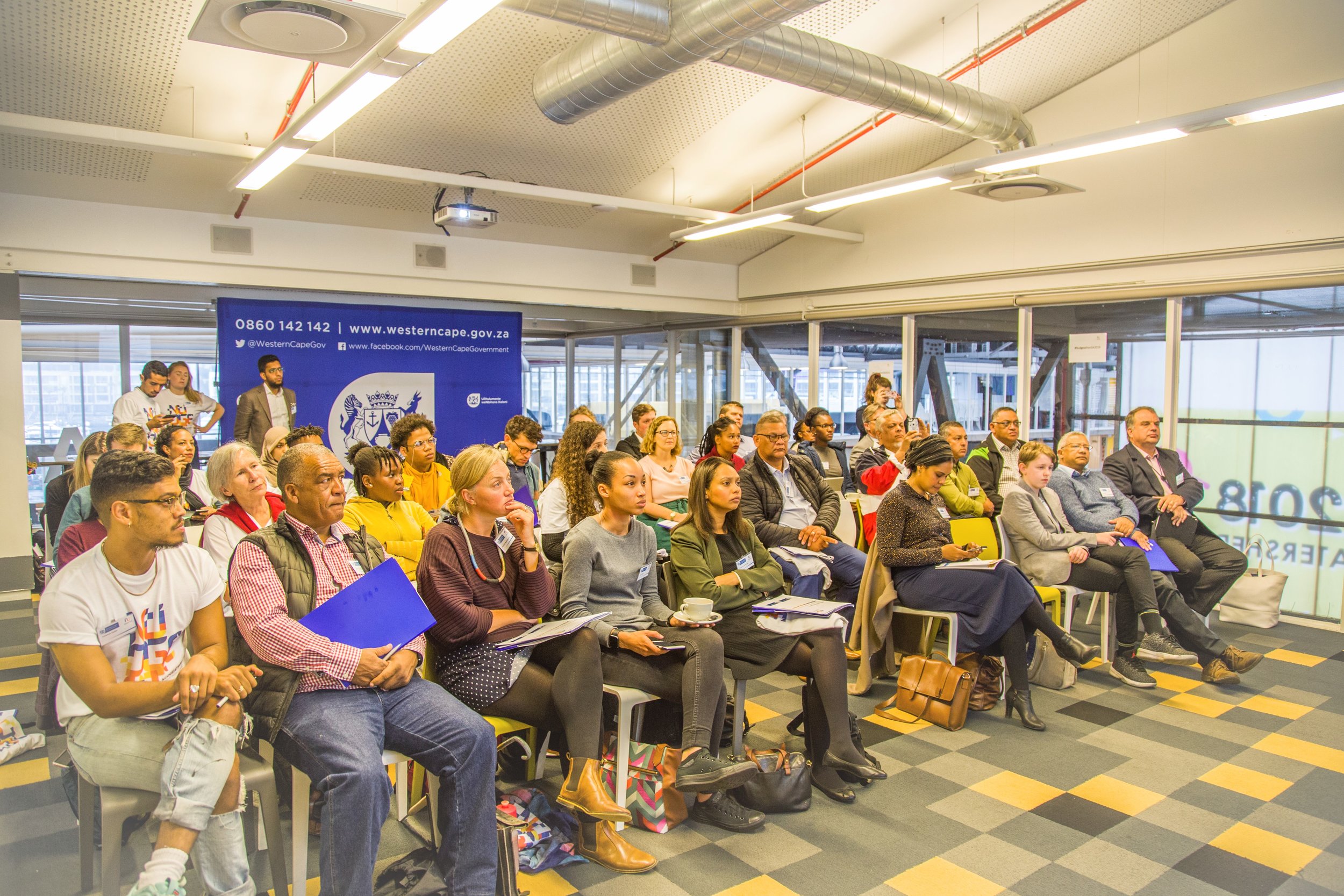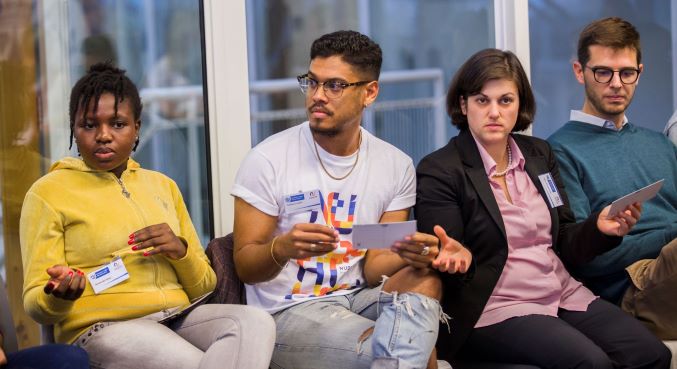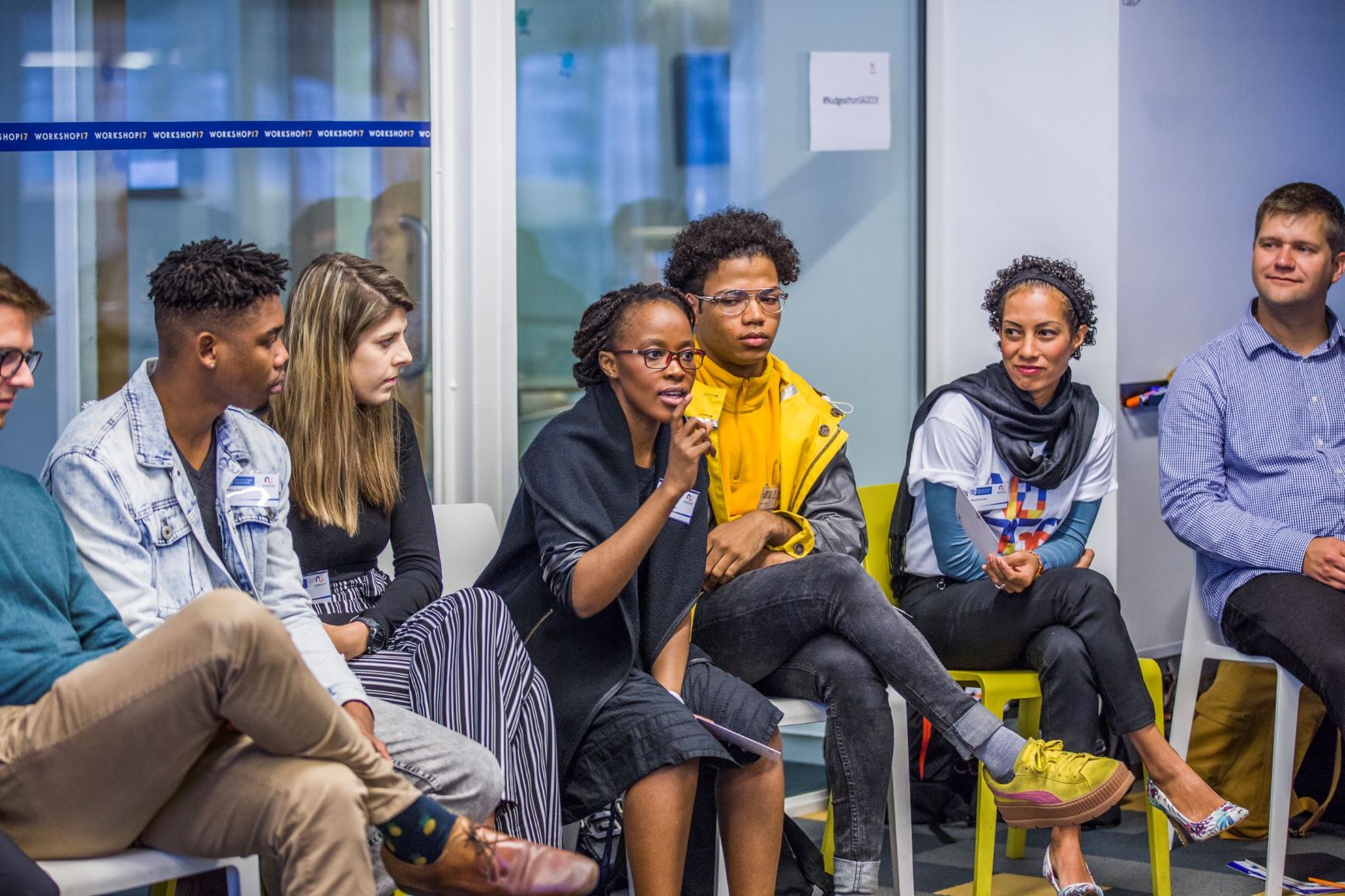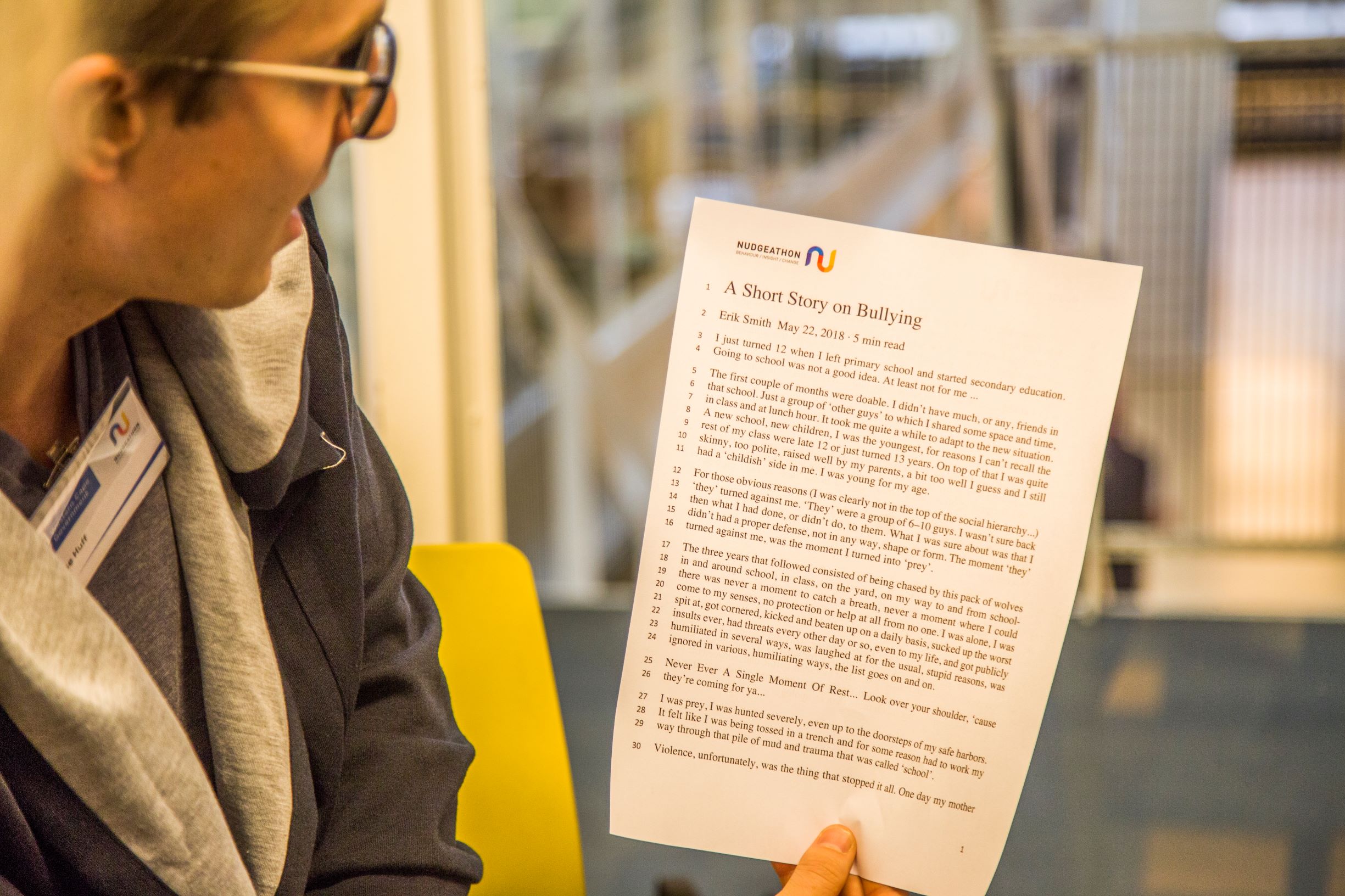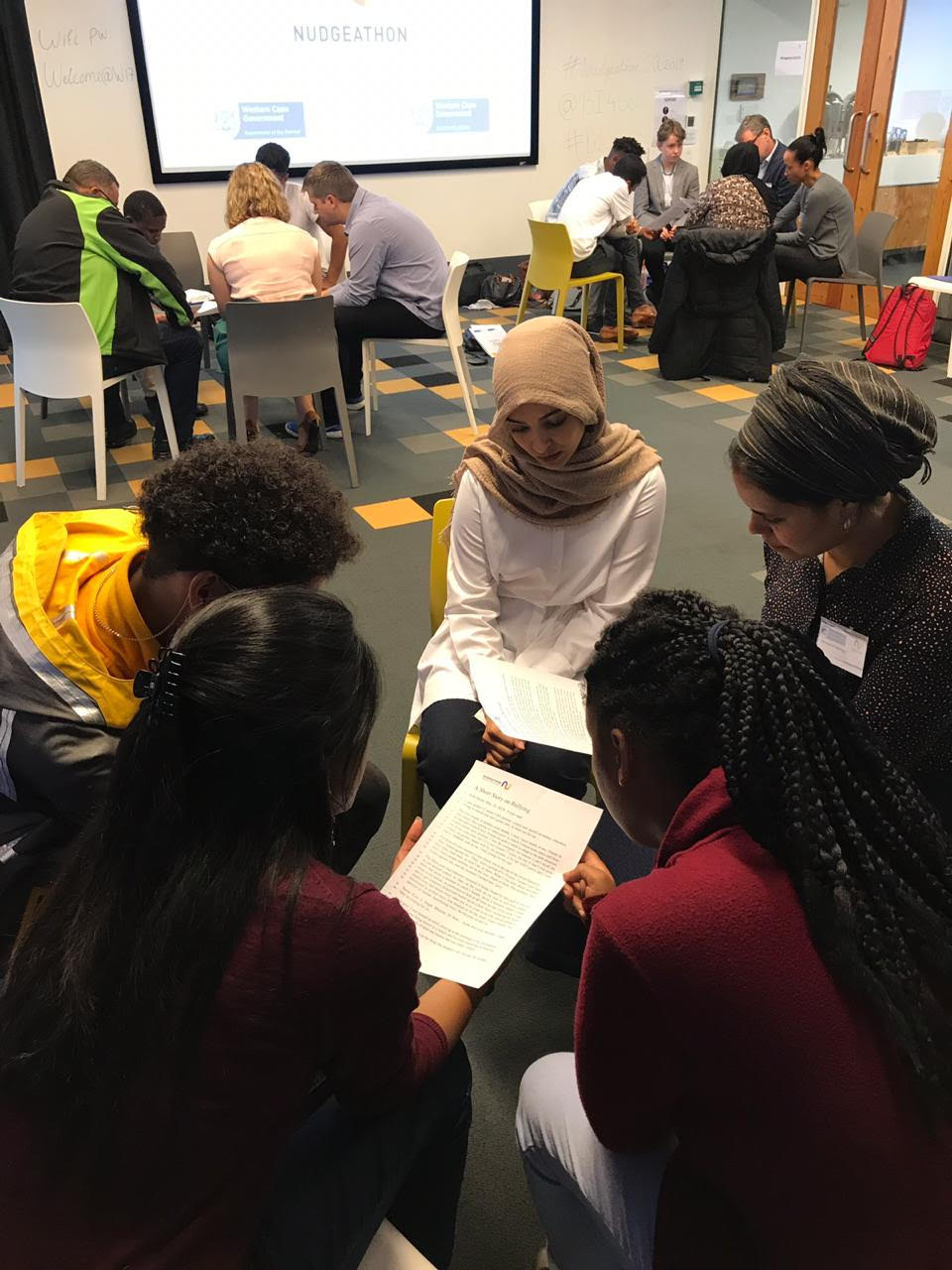The BI4Gov Nudgeathon produced a wealth of ideas from the five diverse teams. A lot of the positive feedback - online and at the event - was focused on the structure of the Nudgeathon: the interdisciplinary approach and the inclusion of stakeholders from across the board.
Emotional processing skills
Participants initially thought quite broadly about their issues and were encouraged to be more specific - to find small target behaviours and solutions that could have an impact across SA’s socioeconomic lines, for example in poor schools, with little funding. That was the main feedback from government officials who came to listen to their presentations, and they were impressed by how many of the groups came up with cost-effective, easy to implement solutions. Most teams ended up focusing on the idea that students don’t have an effective outlet for their emotions at school, and they developed interventions that looked to develop learners’ emotional processing skills.
“I think the most important thing about the Nudgeathon is that it brings a diversity of expertise and knowledge and experience together, and gets us, as government, out of our standard operating procedures and business as usual approach to how to tackle problems. It’s very citizen-centric: we have school principals here, we have learners here who actually understand what the issues are. It’s very important to get that perspective and feed that into the policy-making process.” Anthony Hazell, participant.
Let’s take a closer look at each team’s solution.
Team 1: Emotional vocabulary
This team developed a solution based on the idea that a better emotional understanding will allow for more control when navigating and regulating our emotional inner lives. If we are able to regulate our emotions, we are better equipped to dispel the negative emotions that often result in violent conflict.
Their intervention was presented as a role play, which illustrated a school environment in which students’ emotional vocabulary is slowly built upon. Starting with just one word, students are asked to identify their emotional state. Week by week, another word is added until learners have a comprehensive emotional vocabulary and, in turn, are better equipped to express themselves. All that is required for this intervention is paper and a pen, making it low-cost and suitable for any SA school.
Team 2: Share circle and glossary wall
Team 2 also identified the fact that learners arrive at school with emotional baggage that they don’t have the tools or space to properly manage. One of their main points was the fact that the first step in processing one’s emotions is to be able to identify them. Their solution came down to reframing the interactions between students and teachers using Behavioural Insights.
They came up with multiple interventions, such as introducing a share circle at the start of each day, where students are able to begin to unpack their emotions and understand their peers better. Learners would also be involved in this process, as they would be grouped into teams and choose weekly themes and discussion topics for the share circles. They also suggested a glossary wall, where students would substitute negative words for positive ones to develop their emotional vocabulary.
“Because I’ve got a Design Thinking background, I’m really interested in the process from discovery to ideation to development. I was amazed by the Nudgeathon and the EAST framework and how that can be applied to particular insights to generate interesting ideas.” Oriole Bolus, participant.
Team 3: Journalling
Team 3 looked at the fact that when negative emotions build up, they have a higher tendency to result in violent conflict. Their solution was praised by the judges - to introduce journalling into the daily lives of students, preferably before the start of the school day. Not only does this provide an outlet for students’ emotions, but it also gives them a mental tool to plan for and navigate their emotional realities. This can be done online or offline (depending on the school) and learners would not be required to show their writing to anyone.
“Journalling isn’t the silver bullet, but it might be the bronze one,” was the judge’s response.
“This is my introduction to Nudge Theory - I’ve heard of Behavioural Insights before but not at this level, and I think it’s a really good way of using simple tools to tackle big problems. I think sometimes people get overwhelmed by these issues and think it isn’t possible to make a difference by introducing small things. I think it’s a very useful tool in any setting.” Chisanga Mukuku, participant.
Team 4: Pledge4Peace
This was the only team who took on challenge 1, and they called themselves Pledge4Peace
They targeted 3 specific behaviours:
- Walk away from conflict and go to a safe space
- Express heightened emotion
- Hold one another accountable and point out bad behaviour
Their solutions involved a 4-part process:
1) Take a classroom pledge written by the students.
2) Rotate with other learners and be tasked with pointing out unacceptable behaviour.
3) Demarcated safe spaces for students to be provided by the school, in 5 minute slots.
4) Bringing a ‘messenger’ student from another school to share insights on conflict management.
Team 5: HERO
This was the winning team - they created the acronym HERO - Helping to Establish Relationships with Others. Their vision was to: “Create a school environment that fosters positive feelings, gives learners a sense of emotional security and builds their trust.”
They came up with a number of interventions, such as a class tree, where students would write down their emotions on a paper leaf and stick it to the tree outline. The judges really liked the idea of having a pubic declaration of one’s emotions whilst still maintaining a comfortable level of privacy. Their other solutions involved sharing circles, community outreach programmes, instilling mindfulness and the use of a personal passport in which they can keep a daily log of their emotions.
